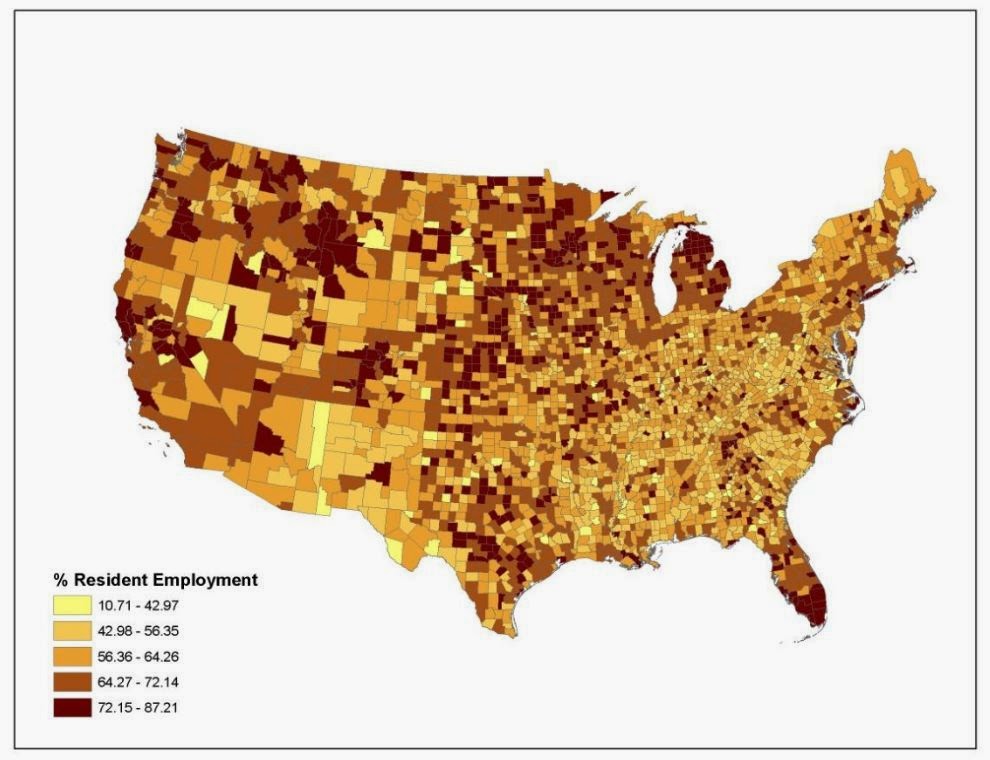Now that summer vacation has come and gone and we head into winter, I thought it would be interesting to look at the weeks worked each year and the hours worked per week by various parts of the workforce. Specifically I used the 2012 ACS Five Year Estimates PUMS data "Class of Worker" typography to compare those that work in "for profit" businesses, those in "not for profits", those in "government employment" and those that are "self employed".
Below are several graphs which show the distribution of each of these classifications in terms of the hours and weeks worked in the past year. To start with, as you can see below, most of the workforce is working between 31 to 40 hours weekly - the majority of those working at for profit businesses (56%), those in non-profits (55%), and those working in the public sector/government (62%) all work in the 31 to 40 hour range.
 |
| Click to Add |
The lone exception are workers who are self employed. While more of them work 31 to 40 hours per week (26%) than any other ten hour span, it is not a number approaching the 50% mark as with the other three workforce groups. If we look a bit deep at these numbers the reason why is obvious.
Below are four pie charts showing the percent of workforce for each group that work more than 40 hours per week. In the case of for profits, non-profits, and government workers, somewhere between 38% and 45% worked in excess of 40 hours each week in the past year. However, note the percent of self employed workers who put in more than 40 hours of work each week - nearly 3 in 4 (74%) worked in excess of 40 hours per week. And from the PUMS data, it shows that as many as 15% worked in excess of 50 hours each week!
 |
| Click to Enlarge |
 |
| Add caption |
Not surprisingly, most of the workforce works 50 or more weeks per year - regardless of the sector, between 70% and 75% worked 50 to 52 weeks in the last year.
 |
| Click to Enlarge |
Here is the distribution of each group's workforce in regard to the number of weeks less than 50 that they worked in the prior year.
 |
| Click to Enlarge |






































